When I travel, my focus is less about what there is to see in a place, and more about what it is to be in a place. How can I truly get to know an area and be shaped by its pace, its culture and its people? What does daily life consist of, and how can I have a taste of it?
I savor a glass of Sciacchetrà (a dessert wine) from the private reserve of a vineyard owner after spending hours working alongside him, caring for his century-old vines. I ride along the coast in a tiny fishing boat with local friends, dropping anchor between towns to swim in emerald green coves. I strum a restaurant owner’s guitar and sing for all those gathered, as he brings out steaming dishes of regional cuisine my new friends have just ordered.
All that is to say, when entering a city, I want to place my fingers on its pulse and feel the rhythm of its heartbeat. This often takes the form of pressing my feet against the pavement and finding my way to the local market, and I recently had the opportunity to do just that in three unique Italian cities.
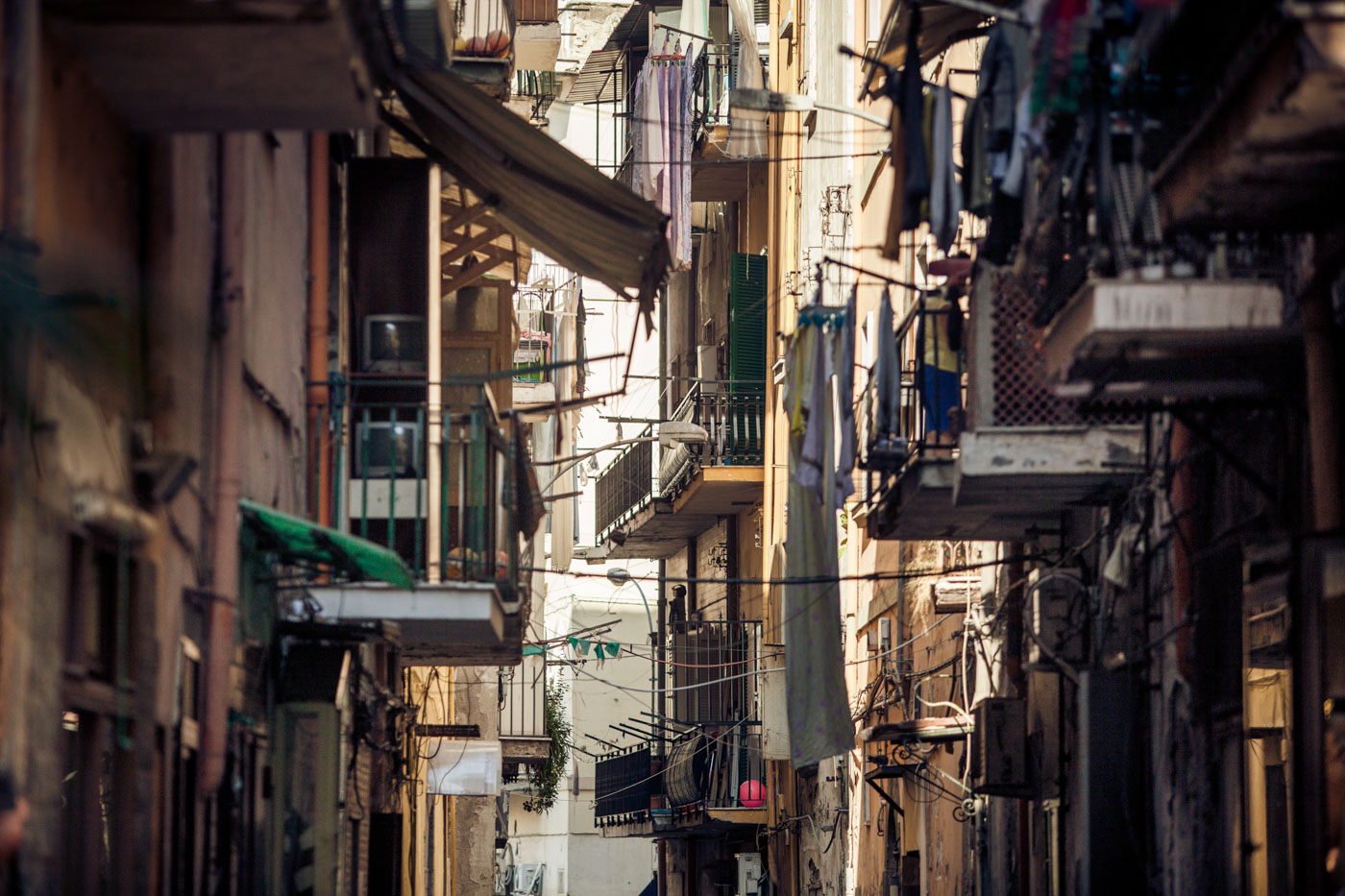
Naples
Heading south from the metro station at Piazza Garibaldi, the city threatens our peace, assaulting our senses. The clamor of honking horns and rumbling engines abounds as cars, buses and mopeds race around with little respect for pedestrians, stop signs or red lights. Our feet fumble through the streets while we meander, mesmerized by the antiquated buildings towering overhead offering brief glimpses of celestial skies and but a few rays of light. Balconies are cluttered with satellite dishes, potted plants and laundry––which is sometimes strung from one balcony to the next, leaving towels and t-shirts hanging across narrow alleyways.
We happen upon a wide street swarming with locals, each side lined with dingy stalls, filled with everything from cigarettes and DVDs to eggs, produce and fish. The medieval archway supported by two columns is a dead giveaway; once a gateway into the city, this is none other than the Porta Nolana fish market. Two officers in blue stand in the center of the madness, causing a slight tremor within when I consider why their presence is necessary at a market. Nevertheless, I’m grateful for their care in cautioning us to hold tightly to our valuables—though their warning comes not without some flirtation.
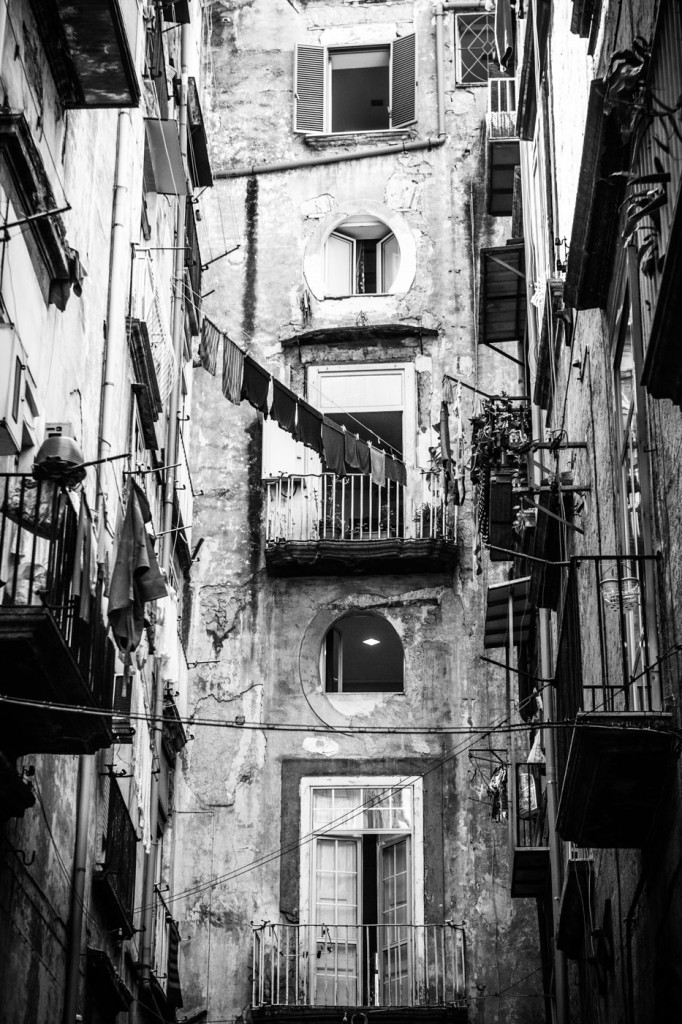
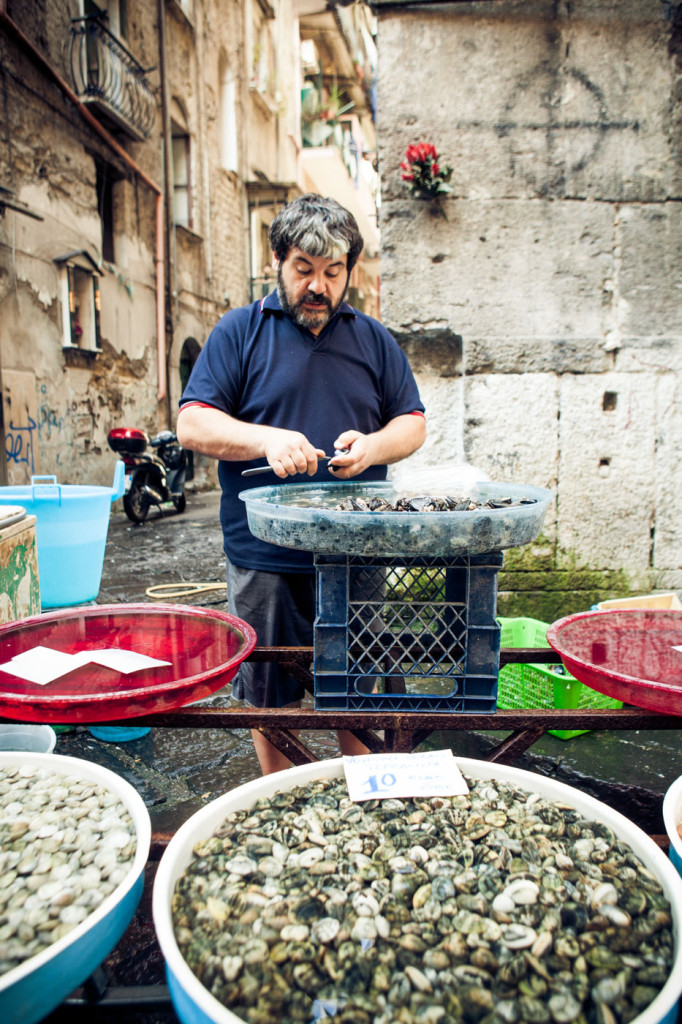
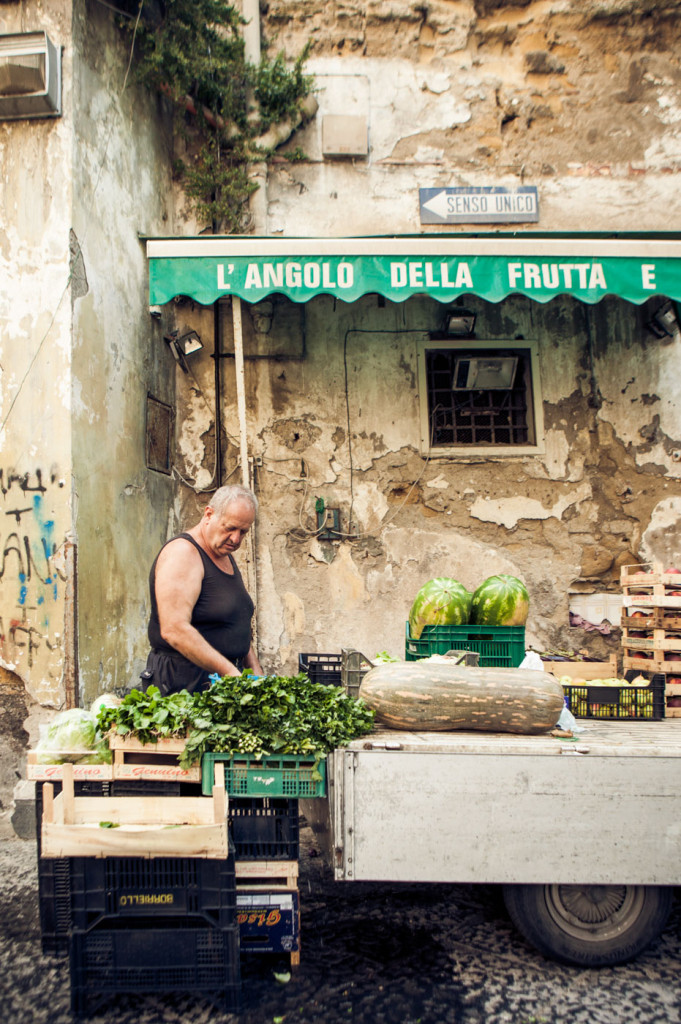
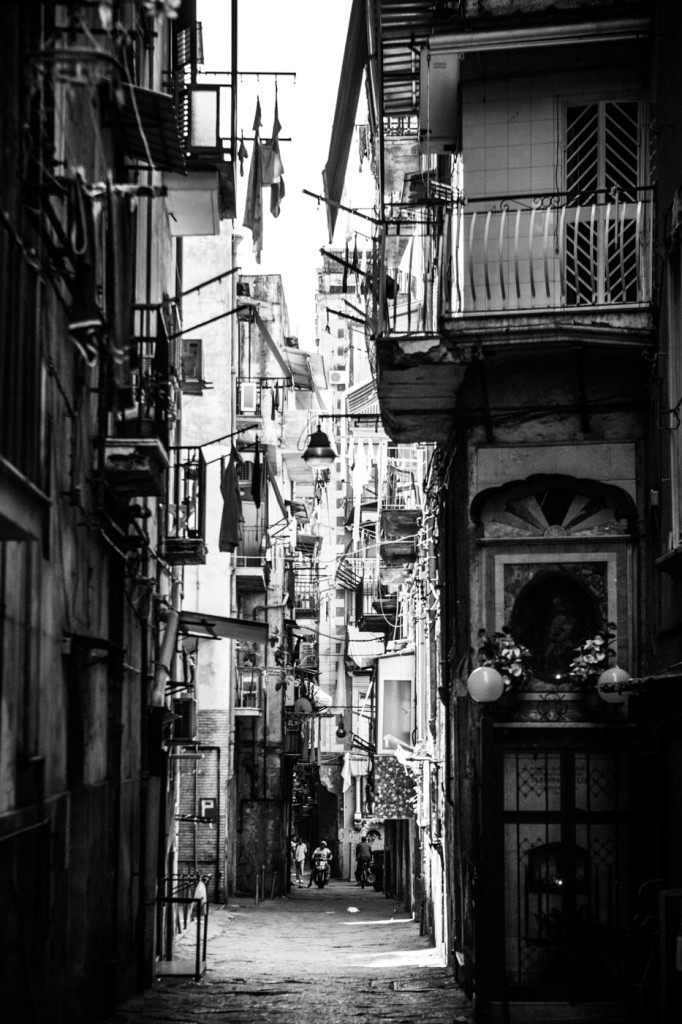
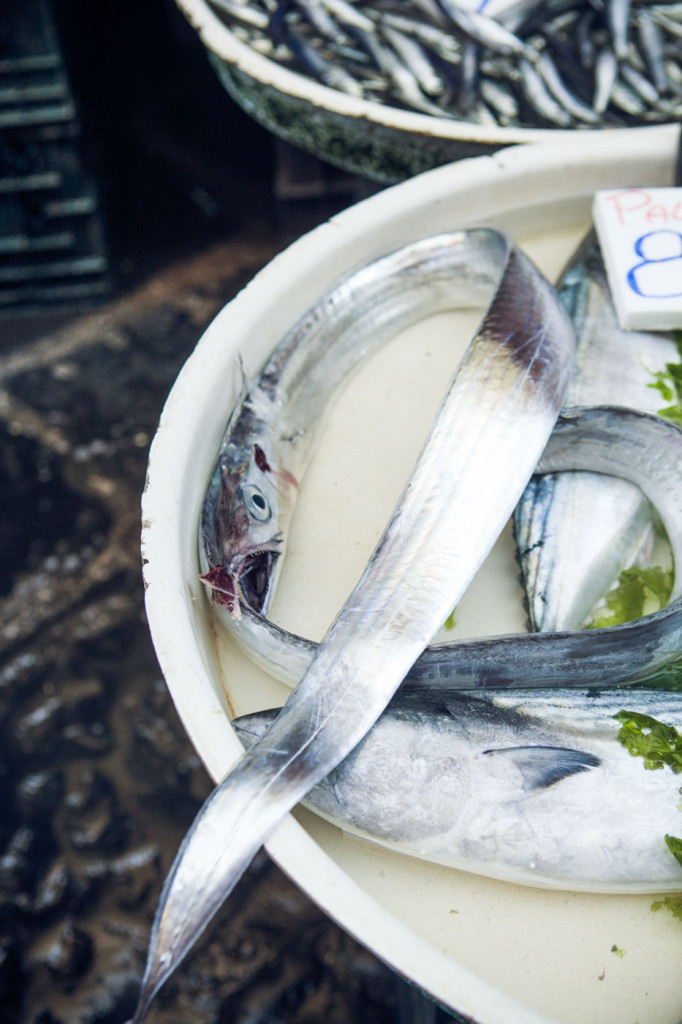

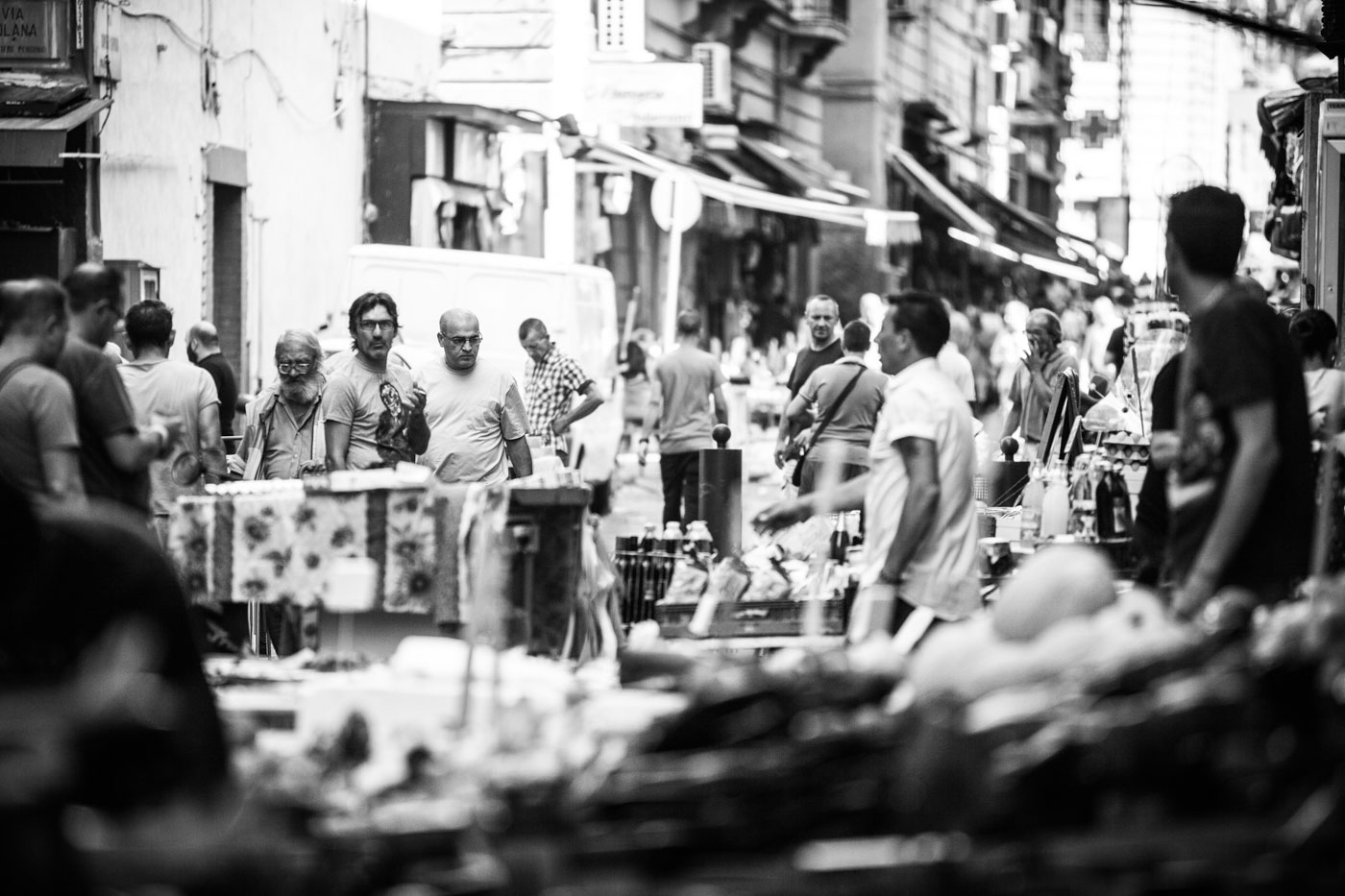
It’s the first time I’ve experienced adrenaline coursing through me when entering a market. Even so, I head deeper down the rabbit hole. Rows and rows of bins filled with shellfish catch my eye, as do the ceaseless streams of water showering fishing nets, each chock full of mussels. A few vendors are busy sorting produce, others are filling their stands with more sea bass, salted cod, and anchovies for the popular aperitivo, alici fritte (fried anchovies). The majority, however, sit back and relax behind their stalls. As if completely unaware of the prevailing chaos, the men enjoy chatting with one another, or having a smoke. There’s an impression that no one is in earnest to sell you anything; there seems to be an understanding that they’ve done their part simply by showing up and laying out their items––now shoppers can in turn do theirs by buying at will.
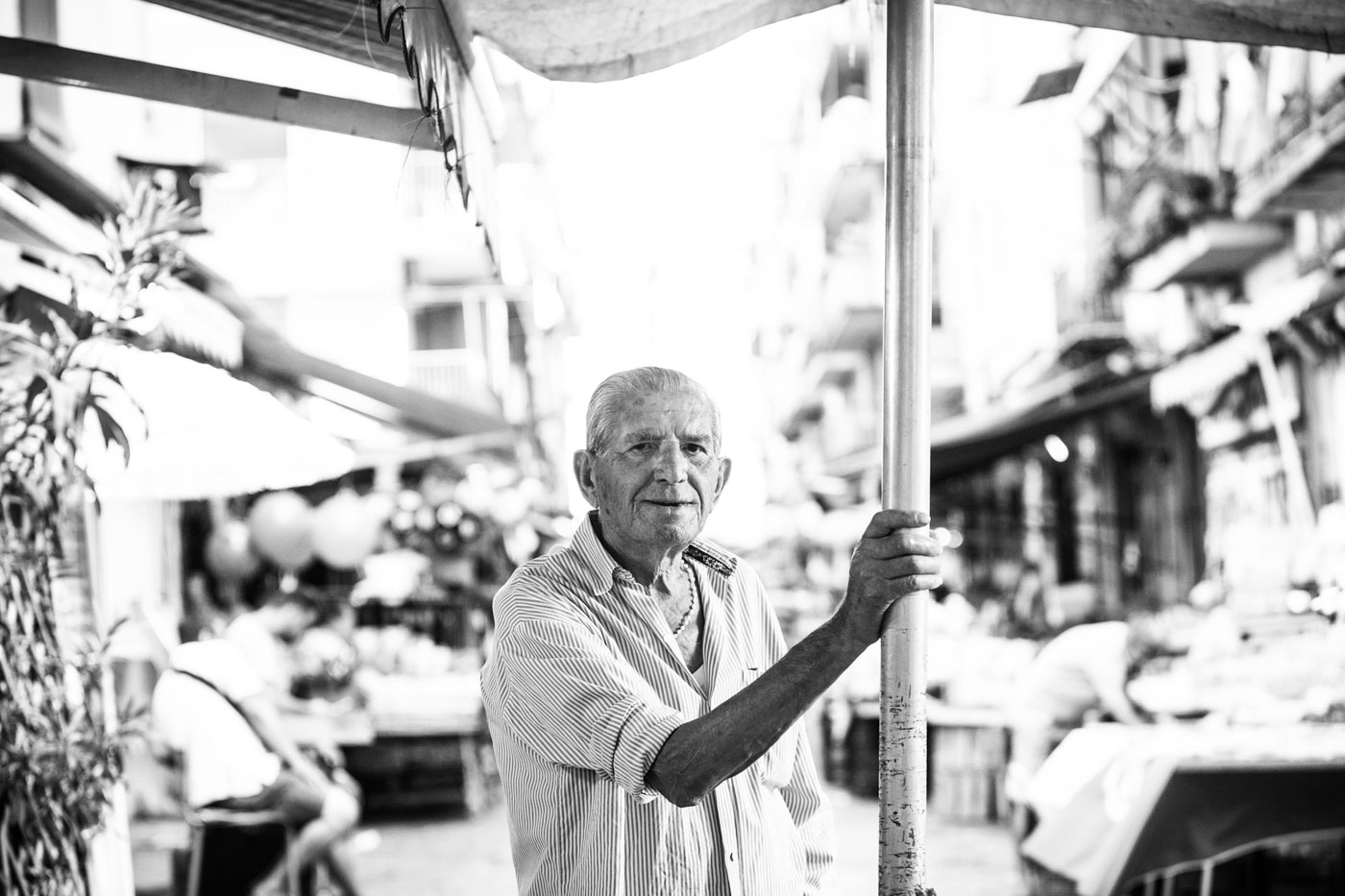

Rome
My stomach grumbles in protest at an early morning wakeup upon reaching San Cosimato’s sleepy square. Vendors preparing for the day converse with me, providing unexpected insights regarding the present state of the farmers’ markets in Rome. As we’re wrapping up, one farmer finishes setting out his produce, and I can’t resist. I fill a brown paper bag with ruby-red cherries; it’s peak season, and they always seem to be more flavorful in Europe. Having been taught to wash my fruit thoroughly since my youth, I feel like I’m committing a cardinal sin by digging in, but once its sweetness fills my mouth, all sense of guilt is gone. I first attempt to remove the pit in the daintiest of ways, placing it in a nearby bin. Yet by cherry number three, I’m carelessly spitting them out onto cobblestone streets, entranced by the morning light enveloping the surrounding buildings—contemplating the words I have just heard.
While there has been a recent resurgence in the popularity of farmers’ markets in the United States, there are places in Italy experiencing the opposite. It was disheartening to hear the sadness in their voices as several purveyors explained that many have traded the beauty of the historic, communal markets for the convenience of corner produce stands and nearby supermarkets. Although they remain a tight-knit community of farmers, vendors and patrons, the glory of their squares brimming with customers is slowly becoming a memory.
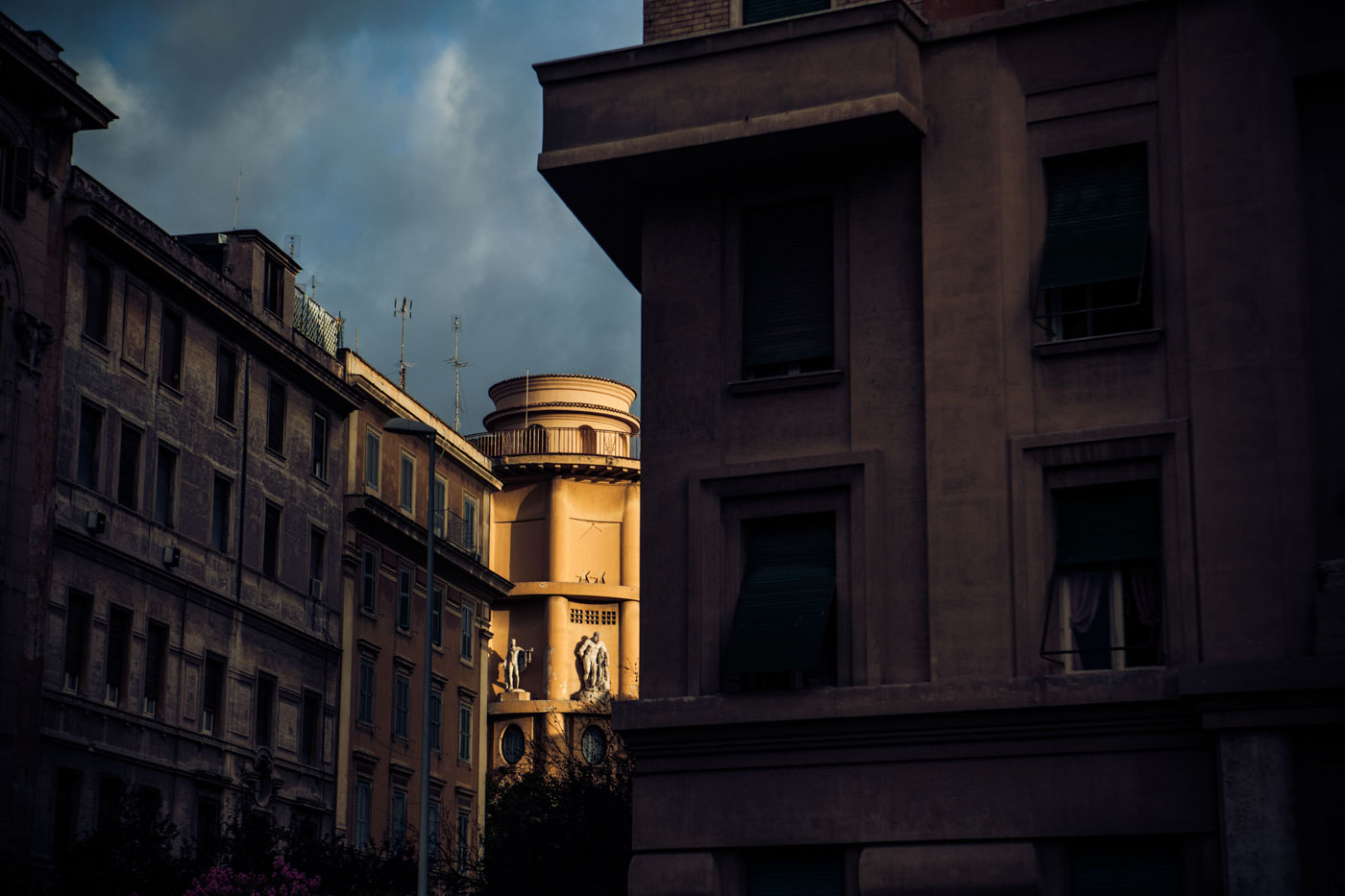
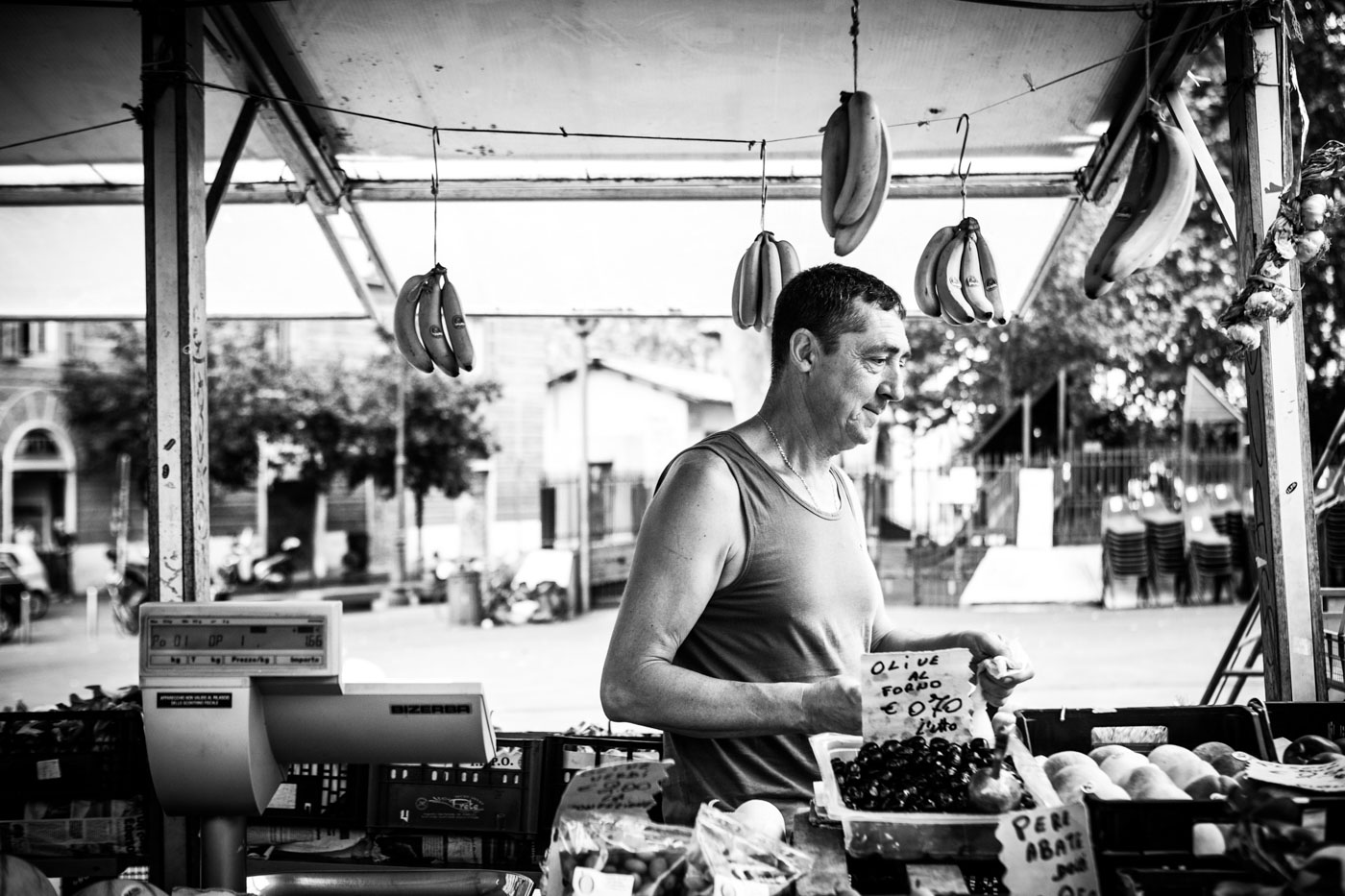
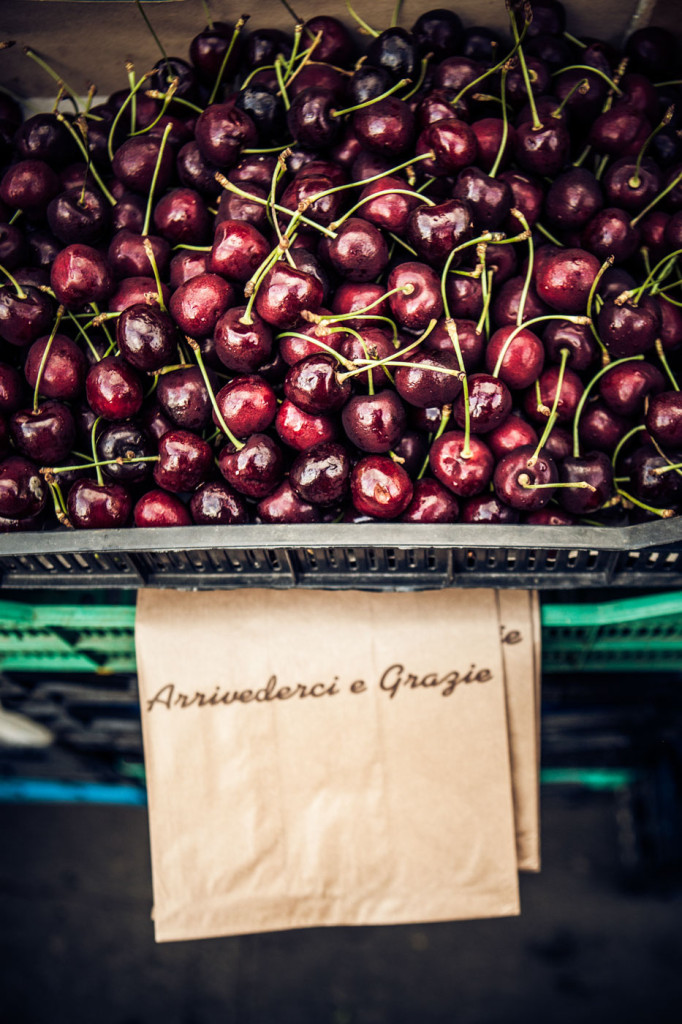
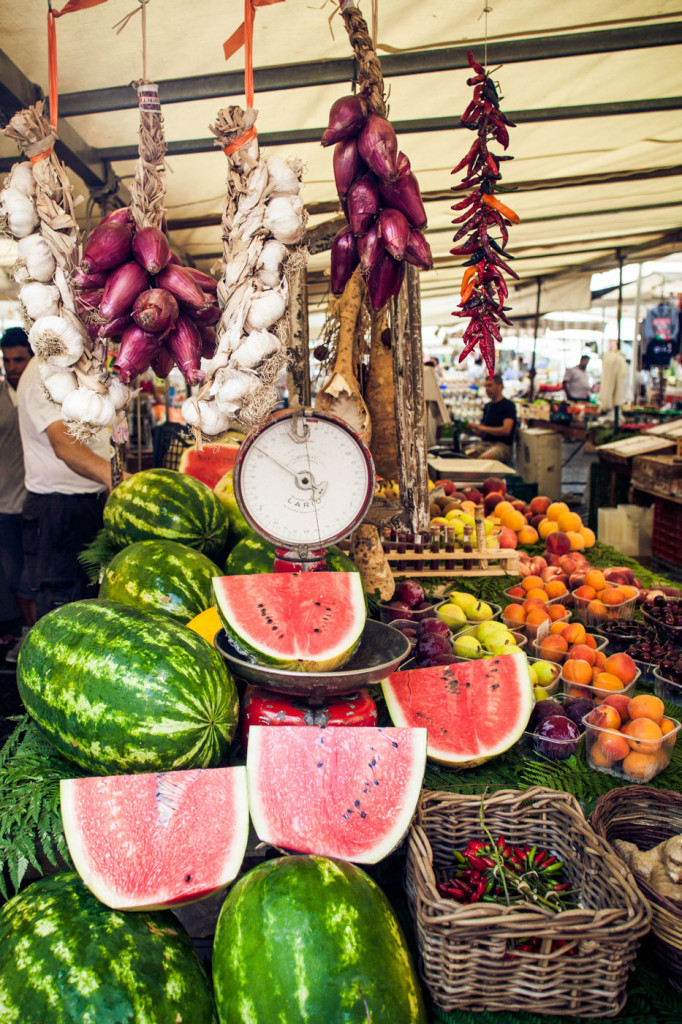
The ominous statue of Giordano Bruno, a man put to death for heresy, stands over Piazza Campo de’ Fiori’s market, as if a warning. Even renowned places like this one risk abandoning their authentic roots, functioning more as novelties for tourists. Once vibrant hubs of their districts, there is a sense of loss as they begin selling souvenirs and snacks alongside produce. Some view the tourist-friendly approach as an evolution, one necessary for survival. Others seek to revive the fading, communal centers.
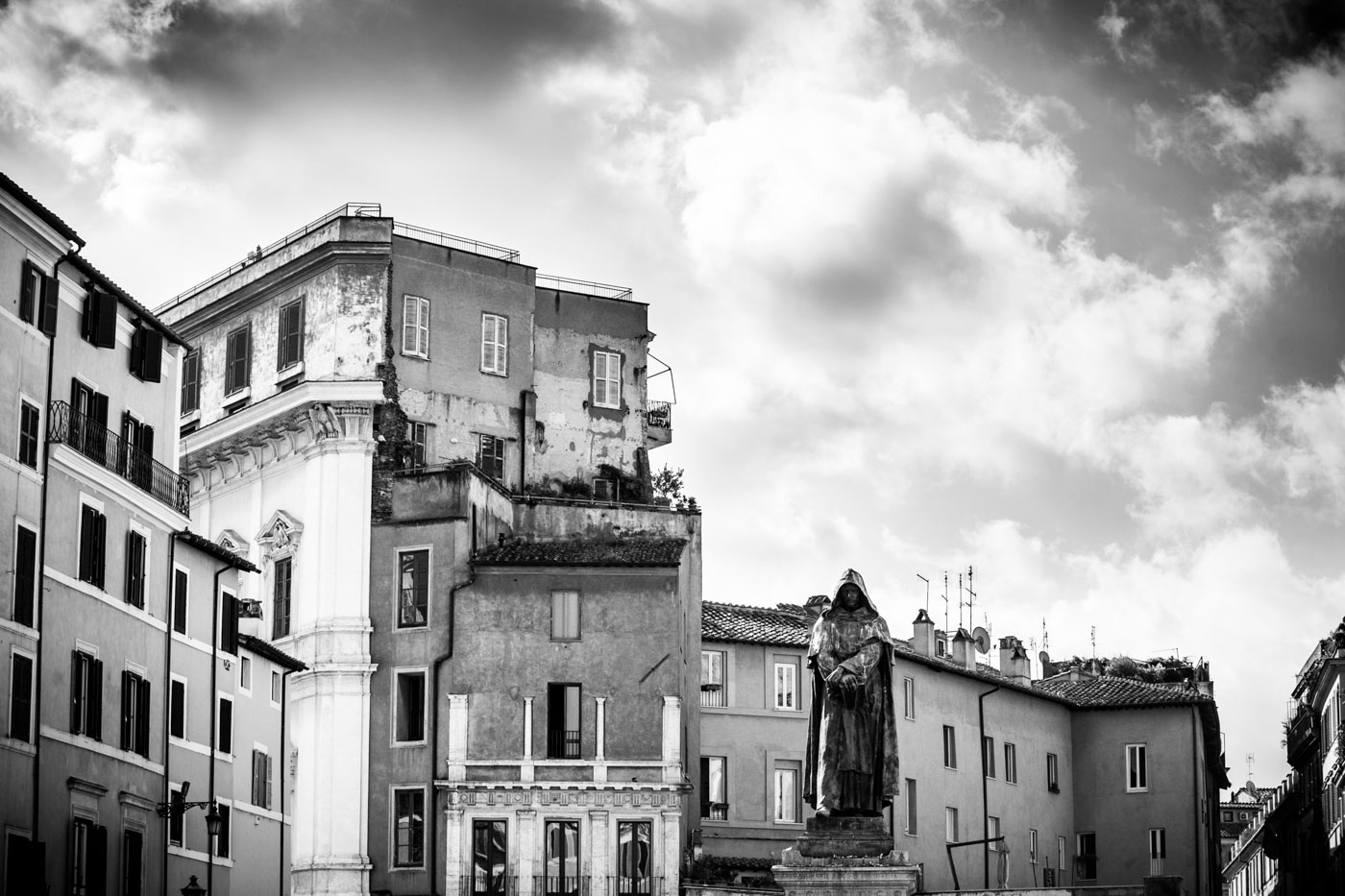
Like the pale moon’s gleam amid the sun’s rays, these thoughts fade into the background. I’m greeted by the amiable smile of an older gentleman at his stall, one inside the Trionfale market. The endless maze of stands occupied by butchers, fishmongers, farmers and purveyors has me struggling to believe that this was once an open-air market. I return the smile, finding the man’s eyes genuine and his tone warm, as he invites me over and begins explaining the importance of porchetta to this region. While slicing a piece of the warm, crackly-crusted pork from the boneless roast, he proudly tells the history of its birth, along with his own, which took place just 20 kilometers outside the city, in Ariccia.
He layers a few slices between two pieces of crusty bread and places it in my hand. I’m surprised by the simplicity of the sandwich, yet as I bite into it—under his watchful eye—my palate is shocked by its rich, robust flavor and moist, tender texture. Immediately, I understand why it’s served with bread alone––anything more would risk stifling the fullness of flavor in its unadulterated state. I express my gratitude and utter delight while handing him a few euro, and though he graciously receives the compliments, he refuses to take the money––who accepts payment for a gift between friends?
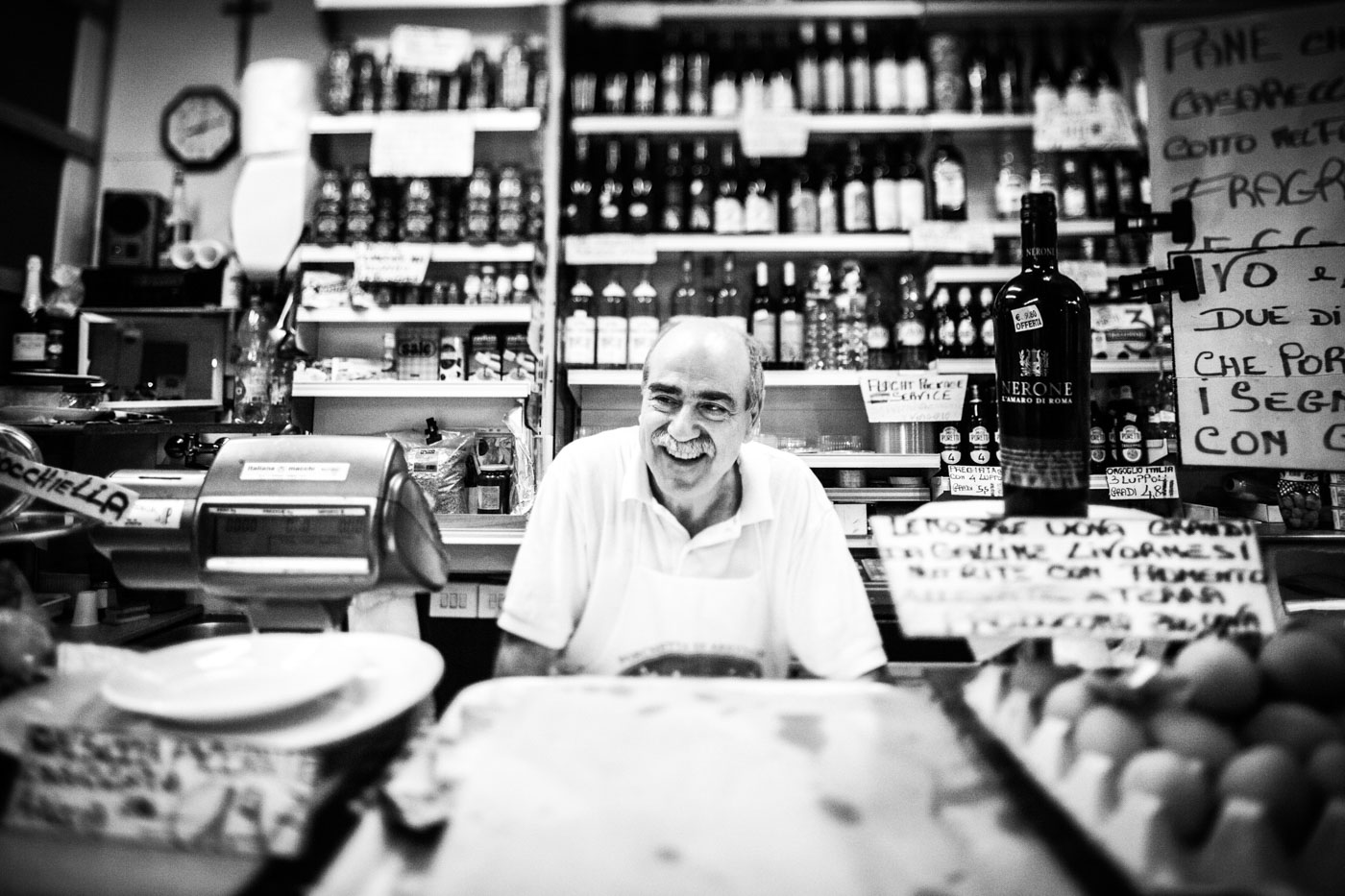
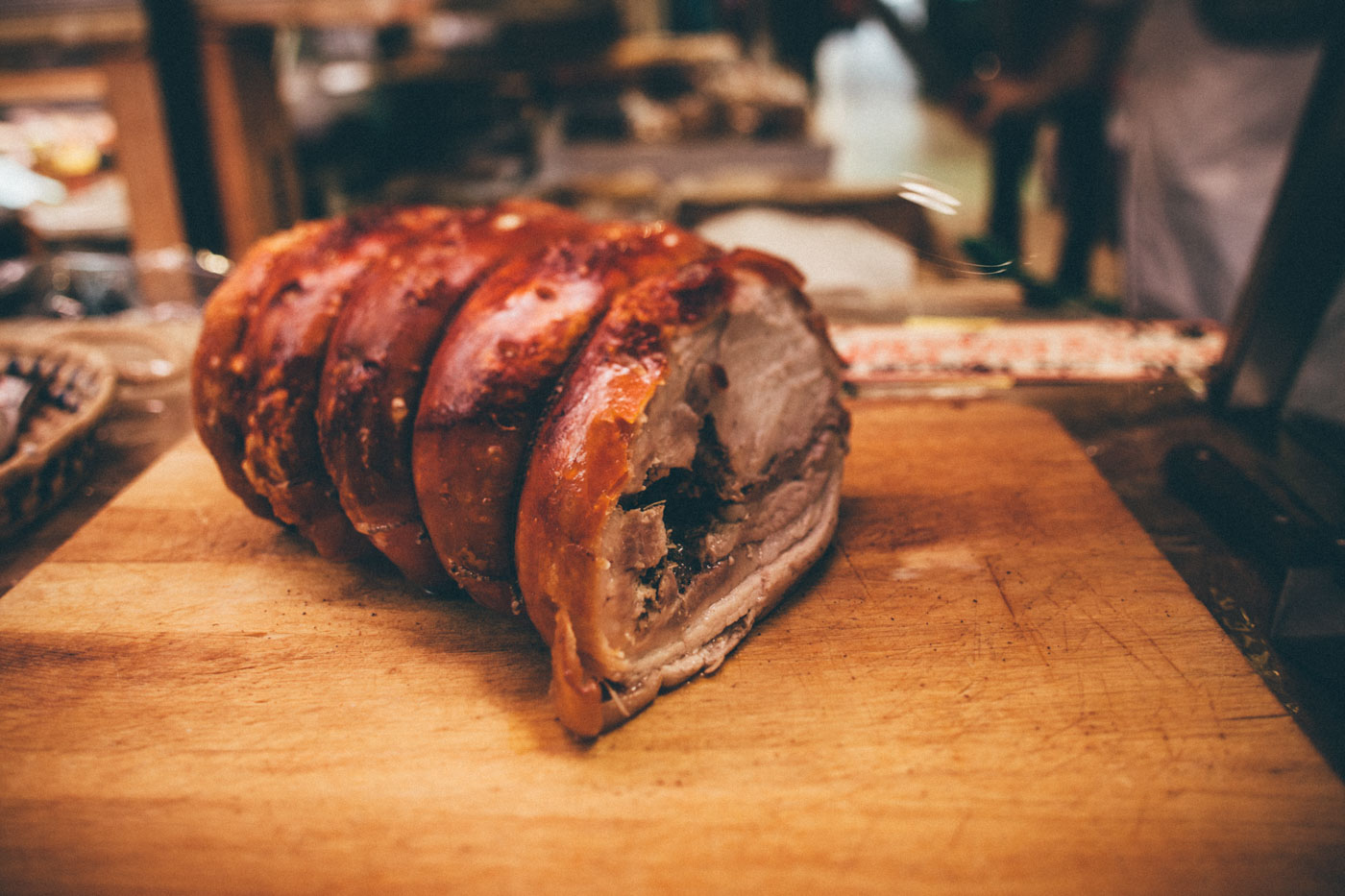

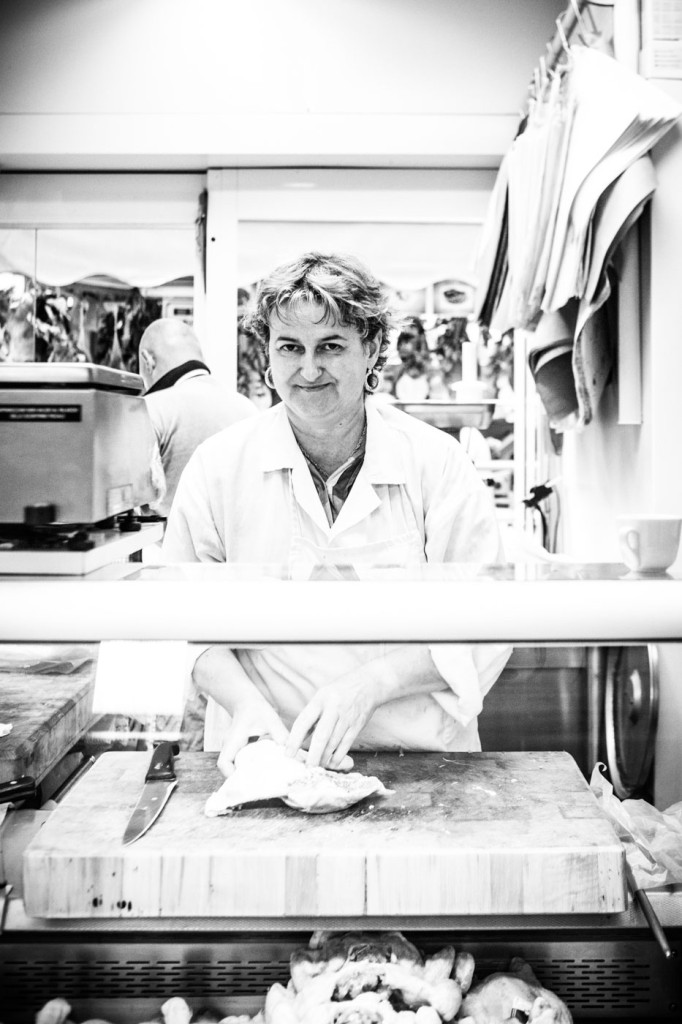
Caserta
“Just give him a euro,” my cousin says as we step away from her illegally parked car near Caserta’s open-air market. Parking is limited, so most resort to leaving their cars on this nearby street; self-proclaimed parking attendants promise to keep an eye on them for the meager price of a single euro. On rare occasions, the police will actually come and ticket the scores of cars parked here, but considering to the time and effort necessary to accomplish such a task, we decide to take our chances. My expat cousin goes on to explain this city is very much off the beaten path, and its market is sure to provide an authentic southern Italian experience.
Tramping up and down every aisle, with tents providing some relief from the heat, I run my fingers over dresses, leather shoes and purses, and toy with the mini Bialetti moka pots. I make my way around a group of four men standing nose to nose, intensely gesturing to one holding up a pair of socks in each hand, trying to decide which to purchase. Still not fully convinced of which is the best quality at the lowest price, they continue their impassioned debate long after we’ve passed.
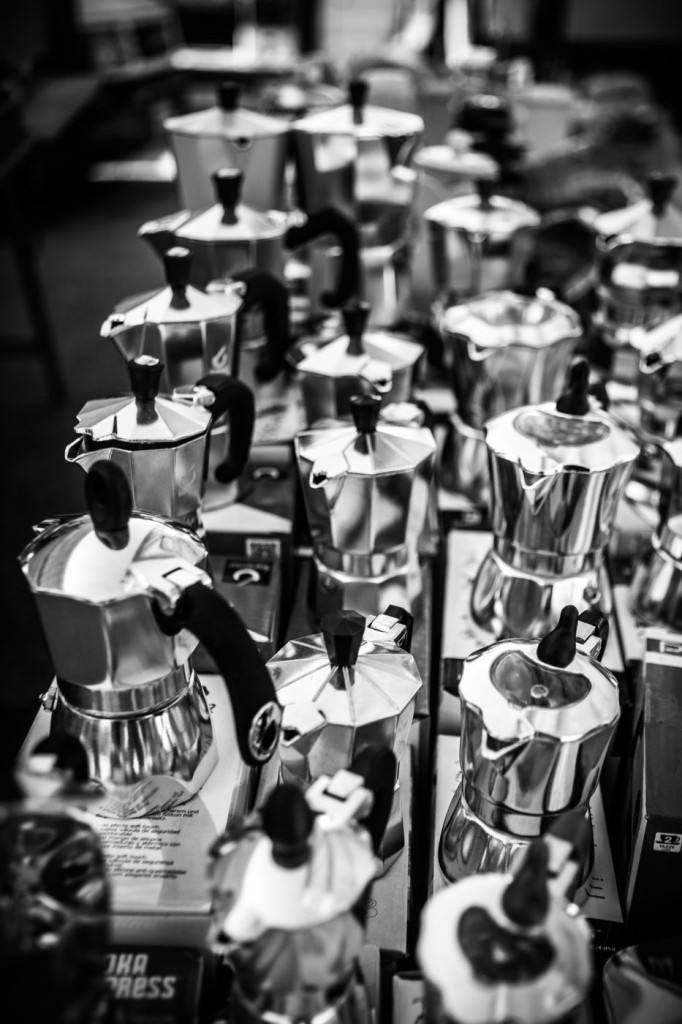
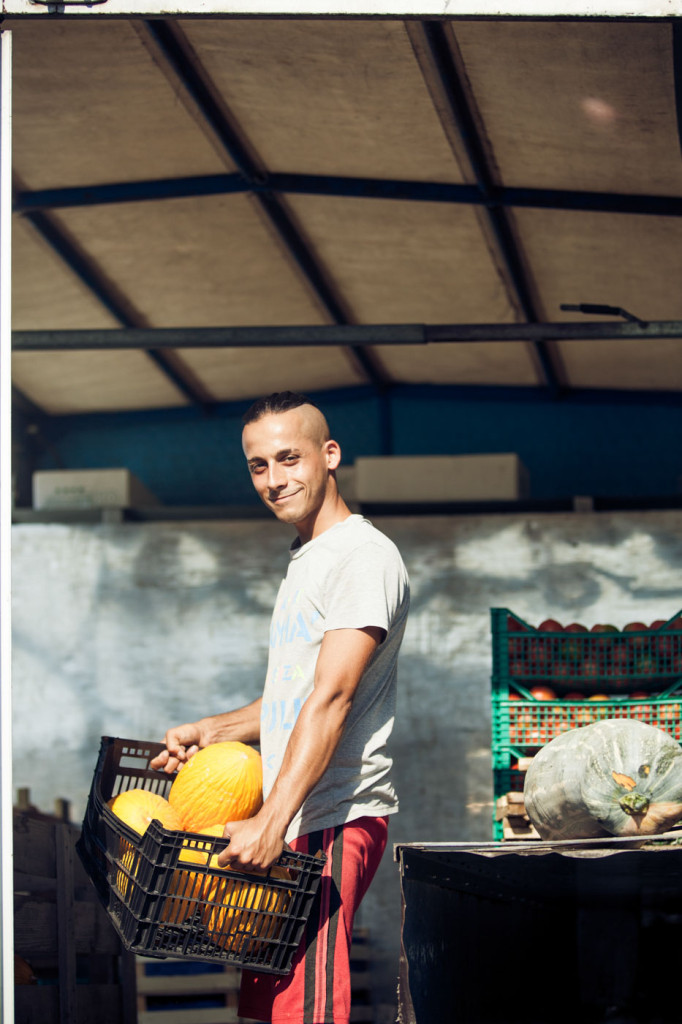

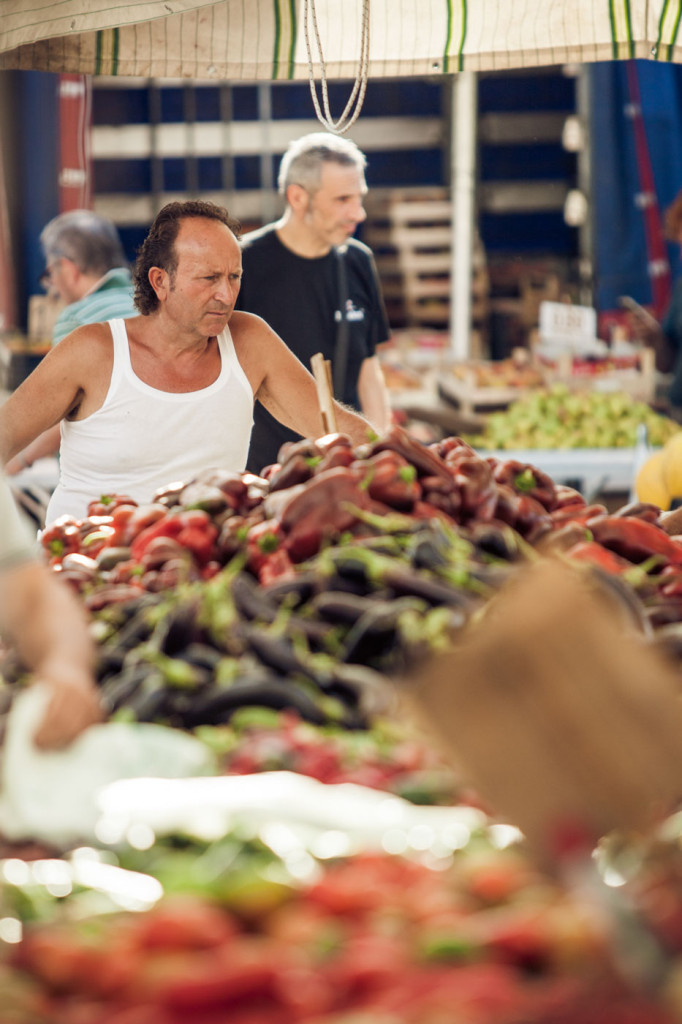
From nearly every stand, there are men barking the prices of their wares along with the usual chorus–– “Fatto in Italia!” or, made in Italy! When the dizzying dissonance and seemingly endless rows packed with buyers and sellers have taken their toll, I turn from the flea market toward the produce. Drawn in by the lilting melody of a man across the way, I make my approach as he continues singing over his squash. Gifted with a set of pipes that could rival Pavarotti and a suave manner of placing vegetables into bags for customers, he immediately wins me over. I offer a glimmering smile and beg for another song. He humors me with the Neapolitan classic, “O Sole Mio,” which is greeted by a round of applause, and creates somewhat of a scene. Young men from other stands—working alongside their fathers—steal glances at us and offer shy smiles, all while showing off their produce.
All is fresh and full of vibrant colors––the squash are five times the size of watermelons and the vendors exceptionally charming––yet it’s the buffalo mozzarella that catches my special attention. Native to Campania, mozzarella di bufala abounds in this region, and the large portion we bring home to make fresh insalata caprese does not disappoint. During my stay, I indulge in savoring its milky white, fibrous layers at nearly every meal. It’s served in various ways, from a venerable a la carte form, to breaded and fried, melted on pizza––and even wrapped in cooked prosciutto.
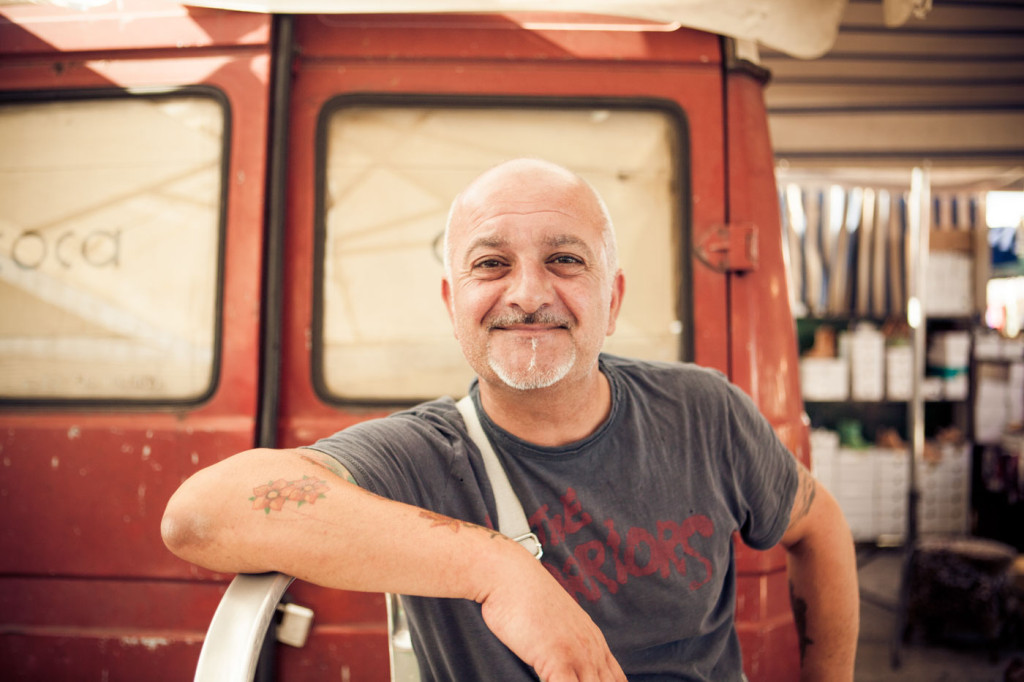
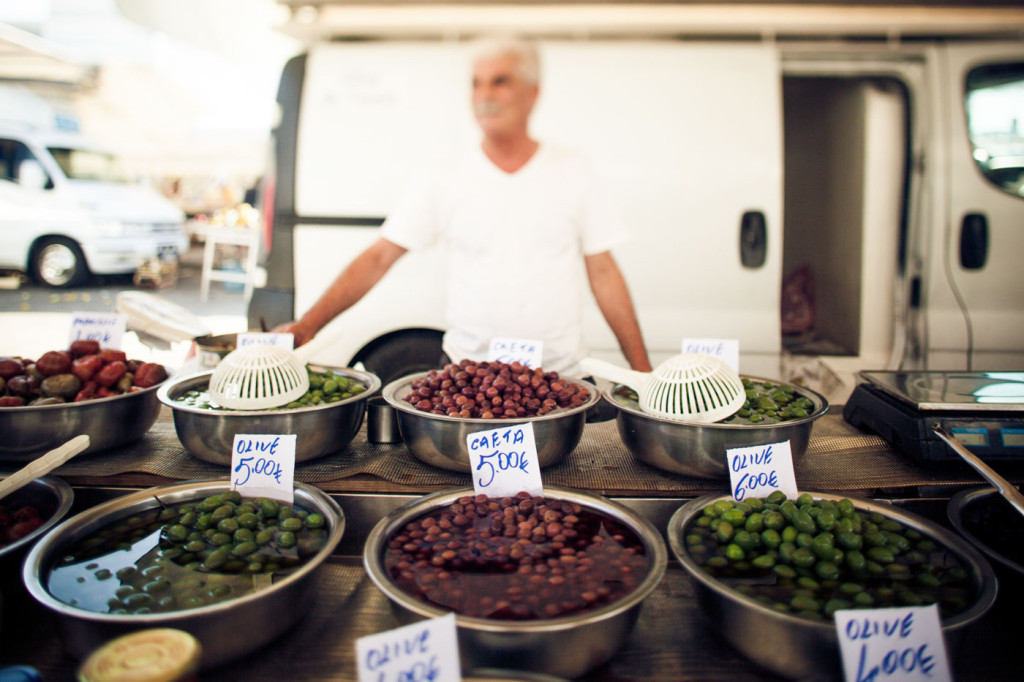
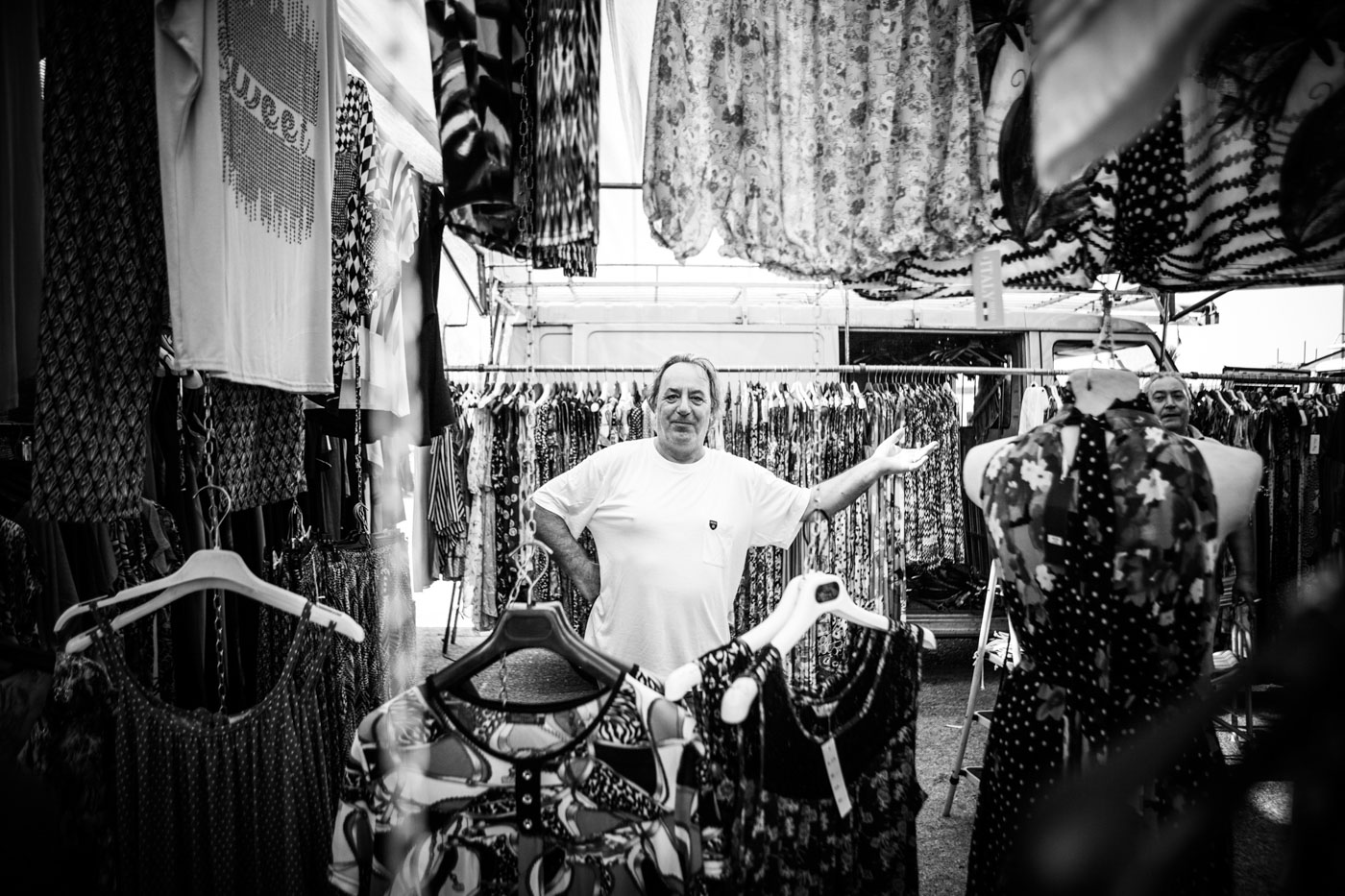

Heading back through the crowds again toward the exit, we are approached by an African man trying to sell us a pair of socks. We indicate that we aren’t interested, and he begs us, out of the kindness of our hearts, to buy a pair so he might support his family. His truth rang clearly: this market is not simply about the trading of goods, in which consumers make purchases and move on. It is a platform for a valuable exchange of needs, one between shopper and vendor, and one that is wholly absent in ordinary supermarkets.
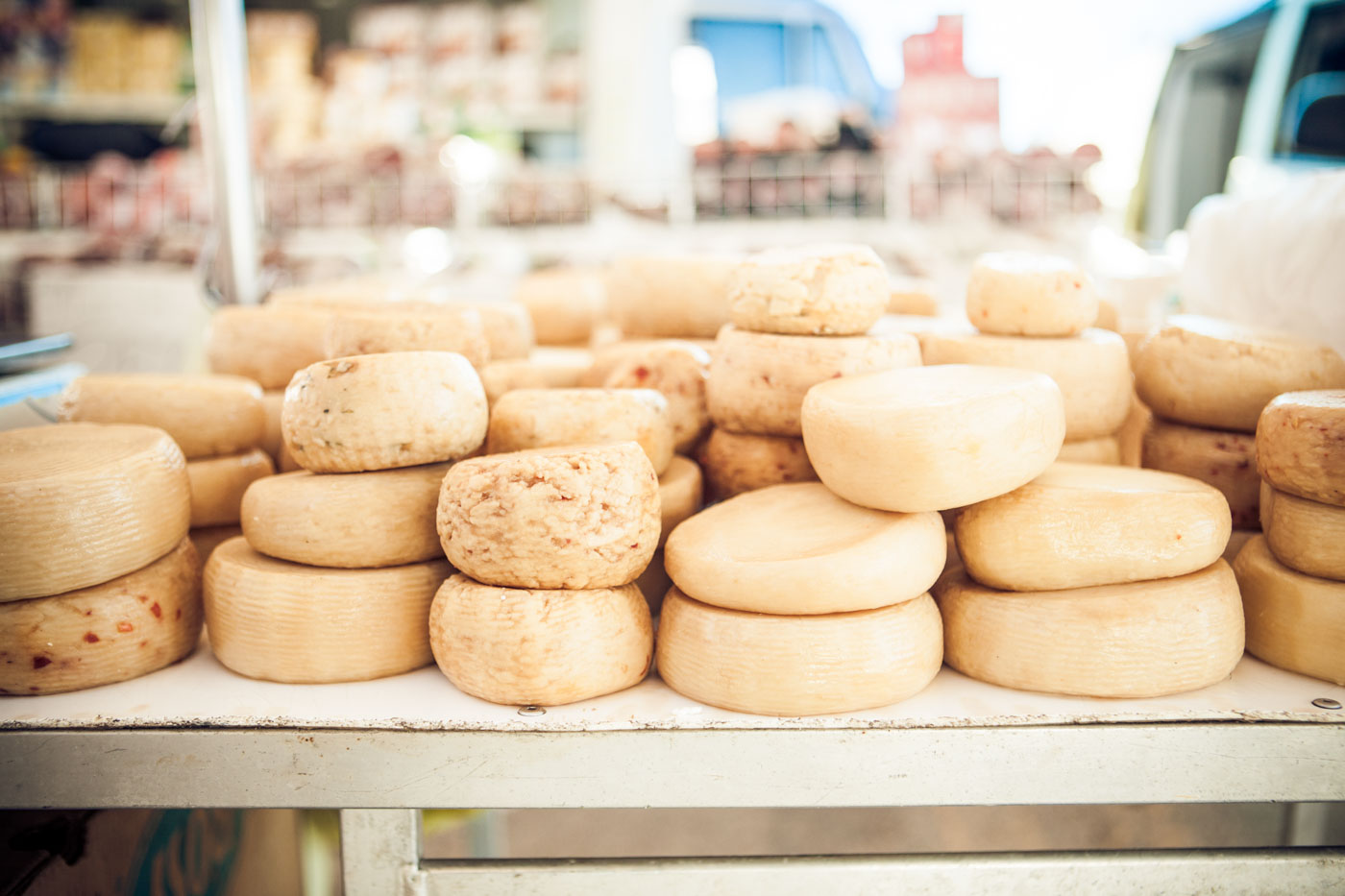
———
In every city, markets are like puddles, containing within a small reflection of the surrounding area—if we only take the time to gaze into them. Whether it’s the older generation in Rome holding tightly to former days, the maddening bustle mingled with the laid-back southern pace of Naples, or the countryside town of Caserta where one generation carries on the legacy of those who have come before, all have valuable lessons to impart to us—if we are willing to receive them. All have much to show us about a city and its people, if we will open wide our eyes and our hearts to truly see.





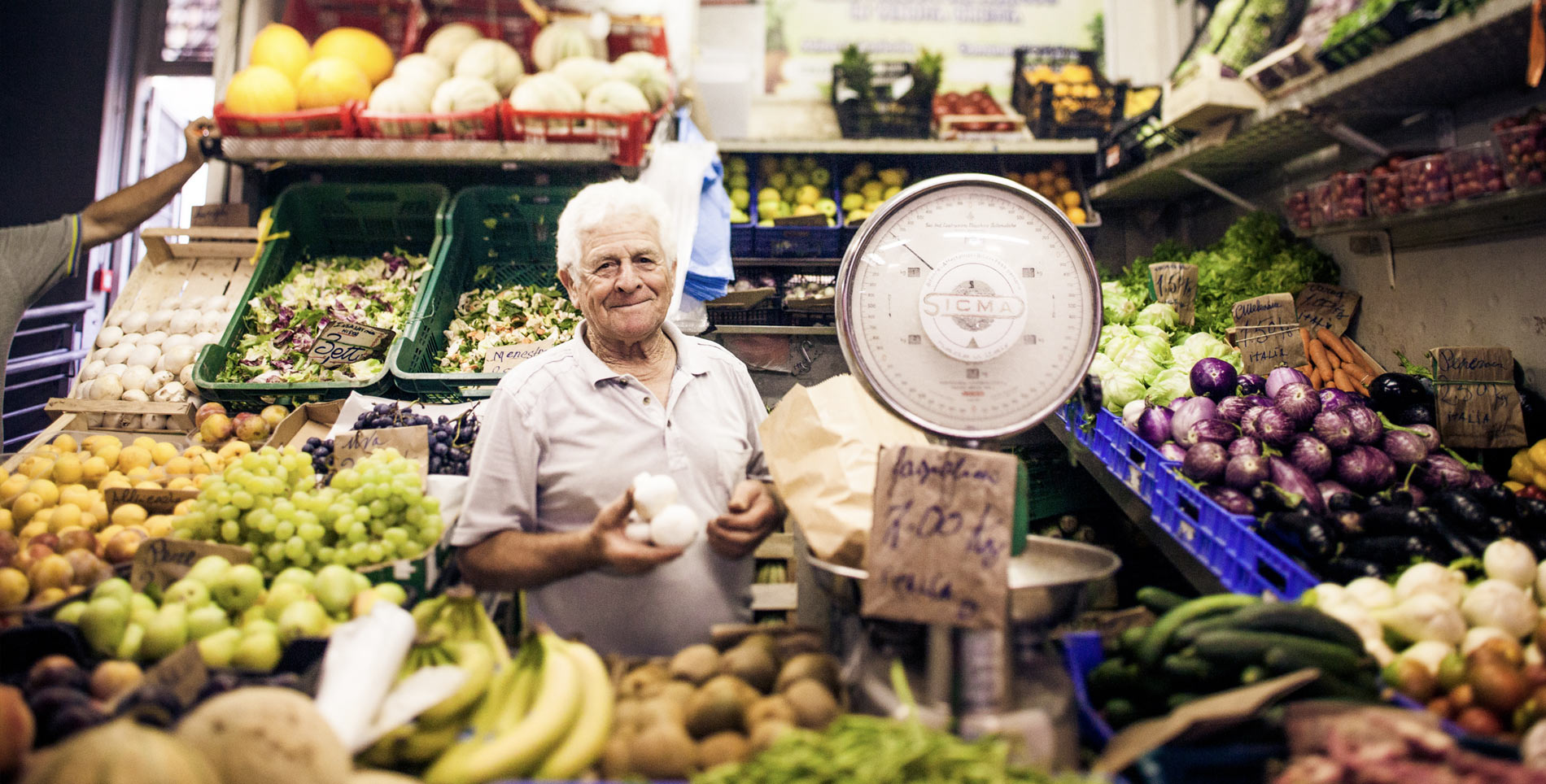

Our comments section is for members only.
Join today to gain exclusive access.